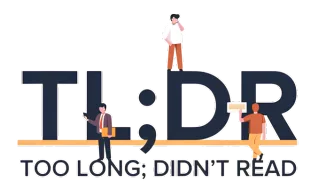A quiet tremor recently ran through the European Union’s financial circles. It wasn’t a market crash or a new trade dispute. Instead, it was a piece of American legislation, a law about digital money, that truly got their attention.
- The U.S. GENIUS Act targeting the stablecoin sector has prompted the EU to reconsider its digital euro strategy. Policymakers are concerned about the U.S. tightening its grip on global cross-border payments.
- The EU is now exploring launching its central bank digital currency (CBDC) on public blockchains, a shift from its initial preference for private, centrally controlled systems. This move aims to enhance the euro’s global circulation and competitiveness.
- Embracing public blockchains could allow the digital euro to integrate with DeFi applications and reach a wider global audience, positioning it as a foundational layer for European digital innovation and ensuring its relevance in the digital economy.
The U.S. Congress, with surprising speed, approved something called the GENIUS Act. This new framework targets the massive $288 billion stablecoin sector. For those new to the scene, stablecoins are digital tokens designed to hold a steady value, often pegged to a traditional currency like the U.S. dollar.
Think of them like digital IOUs for dollars. Tokens like Tether’s USDT and Circle Internet’s USDC dominate this space. They are, you guessed it, dollar-pegged.
This American move, according to reports from the Financial Times, caught many in Europe off guard. It sparked real concern. Policymakers worried that these dollar-backed digital tokens could tighten America’s grip on global cross-border payments. The euro, they feared, might lose some of its digital footing.
For years, the European Central Bank (ECB) has been studying a digital euro. Their initial thoughts leaned towards a private, centrally controlled system. They cited privacy and security as their main reasons for this approach.
But the GENIUS Act seems to have shifted the conversation. It’s a bit like someone suddenly showing up to a chess game with a new, powerful piece. Now, European officials are weighing a different path.
There’s a notable shift happening. They are discussing whether to launch their central bank digital currency (CBDC) on public blockchains. These are decentralized networks, like Ethereum or Solana, open to anyone. This is quite a change from the private infrastructure they first envisioned.
Sources familiar with the discussions suggest this new openness to decentralized networks has a clear goal. It could help the euro circulate more freely. This would allow it to compete more effectively with dollar-based digital assets across the globe.
The Digital Euro’s New Direction
The ECB has been exploring a digital euro for a while now. They see it as a public alternative to the privately issued payment systems we use today. This is especially important as the use of physical cash slowly declines.
Yet, the momentum from the U.S. is raising alarms. There’s a growing concern that euro deposits could increasingly flow into dollar-denominated assets abroad. It’s a subtle but powerful shift of economic influence.
Consider the global landscape. China is already piloting its digital yuan. The United Kingdom is also considering a digital pound. Europe, therefore, faces mounting pressure to deliver its own digital currency.
Of course, some euro-backed stablecoins already exist. Circle’s EURC is one example. But a token issued directly by the central bank would carry far more weight. It would be backed by the full faith of the European Union, a different proposition entirely.
I find it interesting how quickly the ground can shift in this space. One minute, you’re planning a quiet, controlled system. The next, you’re looking at open, public networks to keep pace.
The ECB confirmed to the Financial Times that it is still evaluating both centralized and decentralized technologies. This means the possibility of a blockchain-powered euro remains very much on the table. It’s a race, really, to protect the single currency’s relevance in an increasingly digital world.
Why Public Blockchains Matter
So, what’s the big deal about public blockchains versus private ones? Imagine a private blockchain as a members-only club. Only approved participants can join, see transactions, and validate them. It offers tight control and often higher privacy for its members.
A public blockchain, on the other hand, is like a bustling public square. Anyone can join, see transactions (though identities might be pseudonymous), and participate in its upkeep. This openness can lead to greater transparency and wider adoption.
For a digital euro, moving to a public blockchain like Ethereum or Solana could mean a few things. It might allow for easier integration with existing decentralized finance (DeFi) applications. It could also make the digital euro more accessible to a global audience, without needing specific permissions.
This shift reflects a growing understanding among policymakers. They see the power of these open networks. They realize that to truly compete with the dollar’s digital dominance, the euro needs to be just as accessible, just as fluid, and just as innovative.
It’s a strategic play, really. By embracing public blockchains, the EU could position the digital euro not just as a payment method, but as a foundational layer for a new wave of European digital innovation. It’s a way to ensure the euro remains a significant player, not just in physical wallets, but in the digital ones too.
The decision ahead for the ECB is a weighty one. It will shape the future of digital finance for the entire continent. The world watches to see if Europe will fully embrace the decentralized future, or if it will find a unique path to digital currency leadership.

















